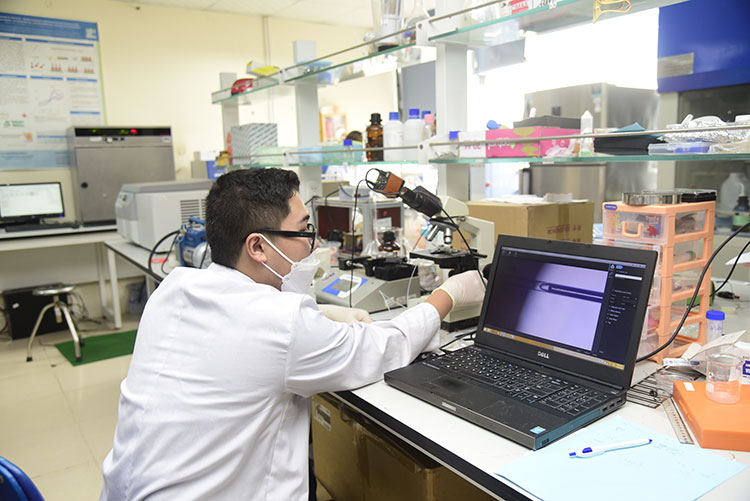1. Atomic Force Microscope (AFM)
Purposes: Use for characterization of morphology of materials’ surface at various courses such as electrochemistry, materials characterization techniques, synthesis nanomaterials techniques
Specifications:
- High-resolution imaging in both air and fluid
- Single closed-loop scanner to span the range from atomic resolution scans up to much larger micron-scale scans.
- Ease of use and a rugged, reliable design
- Easily upgradable for additional functionality.
- A wide rage of modes and accessories
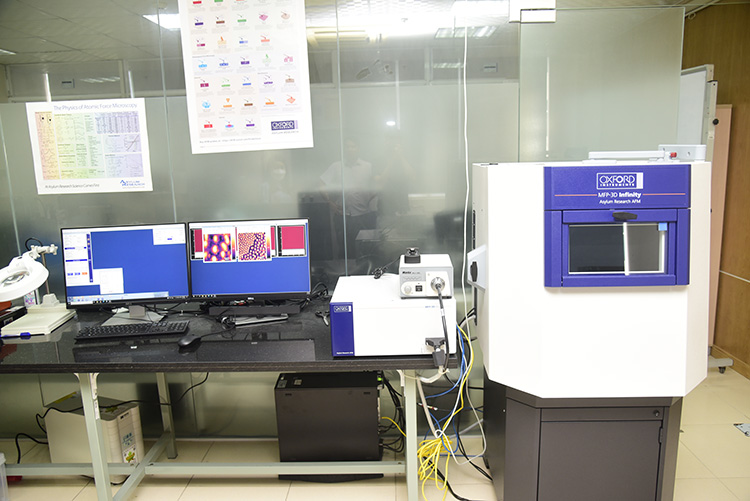
2. UV-Vis Spectrometer
To characterize optical properties of materials, it can be used in various courses such as electrochemistry, materials characterization techniques, Synthesis of nanomaterials, analytical chemistry, and Fundamentals of Materials Science.
For the Practical work:
- Optical properties of Materials.
- Measuring absorption and Transmittance of synthesized organic solution
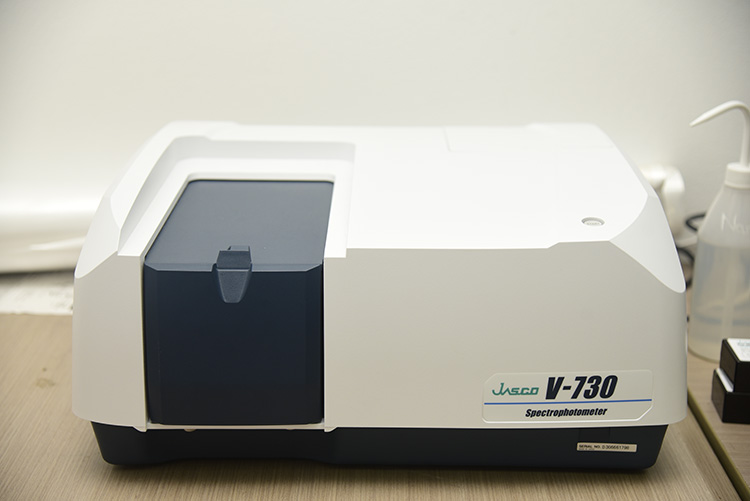
3. Plasma cleaner
Aims: This can be used in various courses such as electrochemistry, materials characterization techniques, Synthesis of nanomaterials, analytical chemistry.
For the practical work:
– Electrochemical synthesis of nanomaterials.
– Electrochemical characterization of organic materials”
Specifications:
Plasma: oxygen (O2), argon (Ar), and oxygen/argon mixtures (O2/Ar).
Gas supply: 2 gas channels via MFCs
– Adjustable power up to 100 W.
– Manual control of the pressure and gas flow (10-100 sccm).
– Vacuum chamber of borosilicate glass (diameter 105 mm, depth 300 mm, volume approx. 2.6 )L
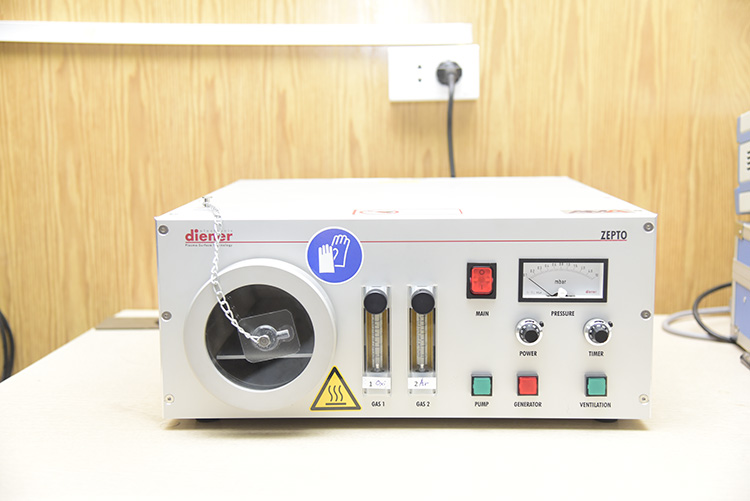
4. Spin-Coater
Purposes: It is used to form a thin film at different spin rotation rate.
Specifications: Programable, friendly-user.
Maximum spin speed 12000rpm
Maximum ramp: 30,000rpm/s
Maximum substrate size accommodated by bowl 200mm
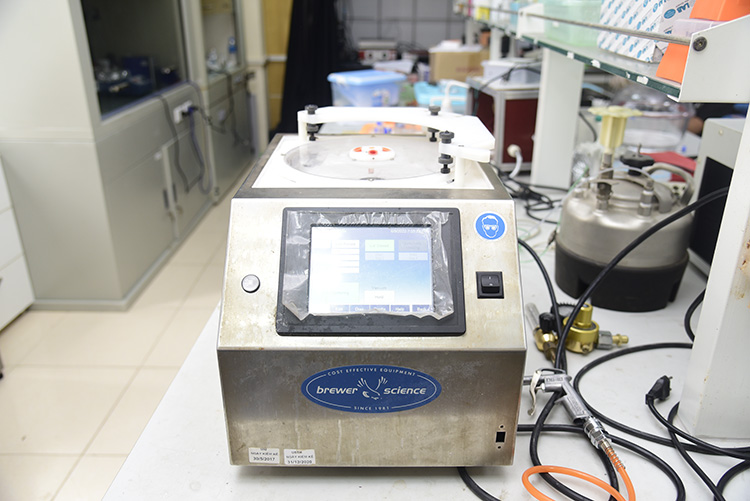
5. FITR
Specifications:
Spectral range: 15 to 27,000 cm-1
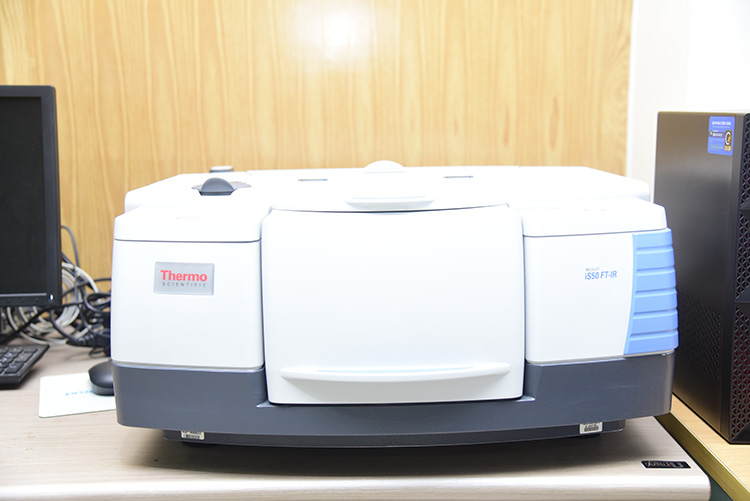
6. Zeta Meter 4.0
Purposes: measures electrophoretic mobility and zeta potential. The basic instrument is for aqueous suspending liquids but accessories are available for working with organic suspending liquids.
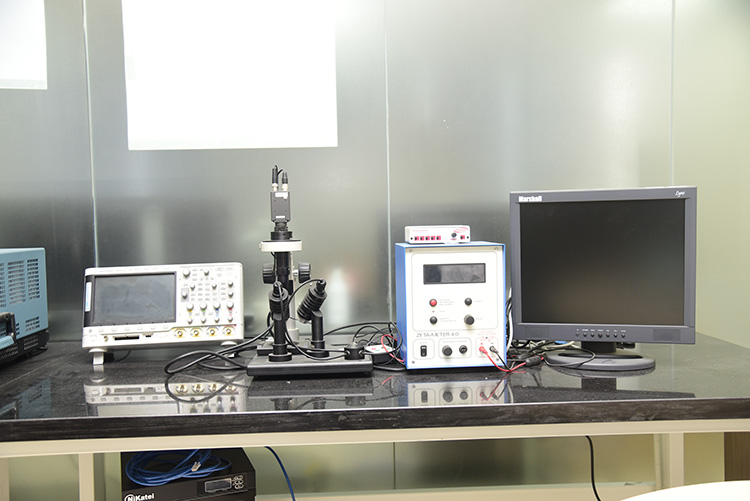
7. Contact Angle
Purpose: Measure the contact angle on different surfaces

8. Kelvin Probe
Aims: to measure the contact potential difference (CPD) between a probe gold surface and a sample. The contact potential is the equilibrium potential that is established between the surfaces of two materials when electrons can flow from one material to the other.
Specifications:
- Tip material/diameter: Standard 2 mm gold tip
- Work function resolution: 1-3mV
- Sample scan size: 50×50 mm
- 3D sample area: Square
- Height Control ( auto): 25mm
9. High resolution Microscope
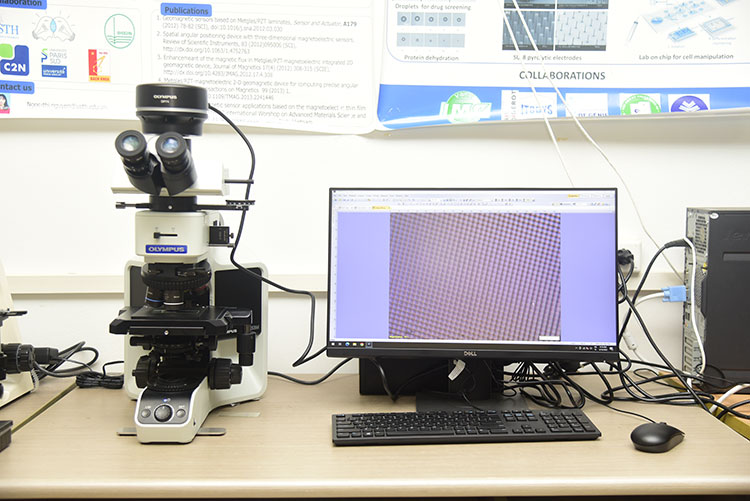
10. Microfluidic system
Description: It includes a Syringe pump, microscope, high-speed camera integrated computer.
Purpose: to utilize for multiple purposes related to microfluidics.
